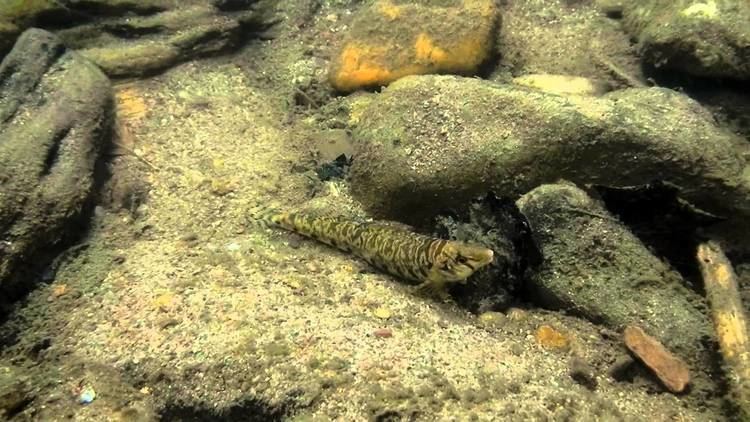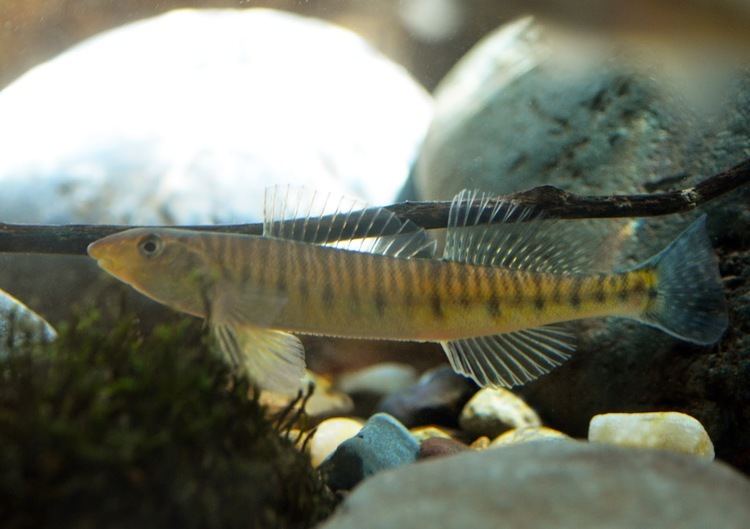Higher classification Percina | Phylum Chordata Scientific name Percina rex Rank Species | |
 | ||
Similar Percina, Percina burtoni, Percidae, Gilt darter, Tangerine darter | ||
Virginia crossroads roanoke logperch
The Roanoke logperch (Percina rex) is a small freshwater fish found in the Roanoke and Chowan drainages in Virginia, United States. They inhabit low and moderate-gradient streams and rivers in warm, clear water in mostly unsilted gravel and rubble in runs, pools, and riffles. They are primarily insectivorous. This fish is a federally listed endangered species.
Contents
- Virginia crossroads roanoke logperch
- Roanoke logperch feeding behavior
- Description
- Distribution and habitat
- Behavior
- Status
- References
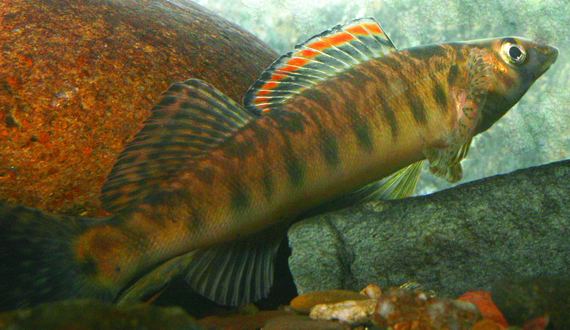
Roanoke logperch feeding behavior
Description
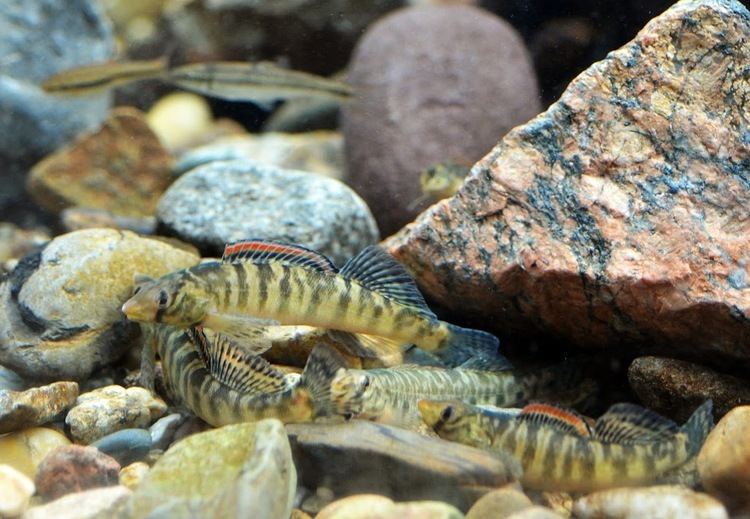
Adults of these fish are between 80 and 115 mm SL. The light-colored body is somewhat stocky and elongate. There are dark, rounded, and vertically elongate blotches on the side. They have a long, cone-shaped snout with a bulbous or blunt tip. There are two dorsal fins, which are both very tall on adult males; the first dorsal fin has an orange band bordered on both sides by black bands. The end of the tail fin is almost straight. The fins have black or brown dark marks on them. The large eyes are near the top of the head of the fish. The fish's upper jaw is longer than its lower jaw.
Distribution and habitat

The Roanoke logperch is known only from the upper reaches of the Roanoke, Dan and Chowan river systems in Virginia, with a small population in North Carolina. It inhabits gravel and boulder runs of slow-moving, warm, small to medium-sized rivers where it is found in riffles, runs and pools with sandy, stony or boulder-strewn bottoms.
Behavior
These fish are sexually mature by about two to three years of age. Spawning occurs from mid-April to early May in water 12-14 °C (54-58 degrees Fahrenheit). Each female may produce from 200 to 650 eggs. The eggs are adhesive to surfaces and found on the bottom of the stream or pool.

The Roanoke logperch use their conical snout to turn over gravel and feed on exposed invertebrates. This enables them to reach prey sheltered beneath rocks that may be unavailable to other benthic fishes; however, this feeding behavior relies on the availability of loosely embedded substrate. In an ecosystem, Roanoke Logperch can be an indication that the river or lake has very low turbidity.
Status
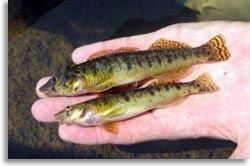
The Roanoke logperch is rated by the IUCN as being "Vulnerable". The threats it faces are from urbanization, the impoundment of water resulting in the silting of waterways, industrial and agricultural pollution. Nevertheless, the population seems fairly stable and may be increasing slightly in the Pigg River.
